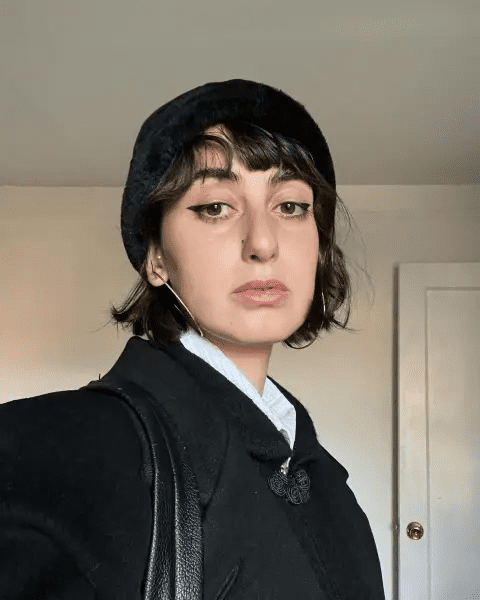How Rama Duwaji — Artist Wife of NYC Mayoral Candidate Zohran Mamdani — Quietly Designed His Brand and Social Blitz From Behind the Scenes
In the sweeping race to lead America’s largest city, one figure has been in the spotlight for her bold platform, viral social-media clips and sweeping agenda for change. But scarcely noticed — and yet quietly influential — is the person who helped shape that ascent behind the cameras. Her name is Rama Duwaji, an artist, illustrator and designer whose partnership with Zohran Mamdani began in relative obscurity, yet now whispers of her role are echoing through campaign corridors in New York City. At 27, a Syrian-American raised in Dubai and now based in Manhattan, Duwaji has chosen a rare path in politics: let the spotlight rest on her husband while she builds his machine in silence. According to the New York Post, she quietly developed logos, oversaw his viral social-media presence and offered creative counsel — all while remaining largely absent from rallies, debates or media appearances. What does that mean for Mamdani’s campaign? And why does it matter?

The first time the pair drew attention was not in a campaign office but on the dating app Hinge in 2021, according to media profiles. They married in February 2025, and though their partnership was previously private, the timing of the mayoral shot brought rumors of a silent strategist in the background. Campaign insiders described Duwaji as a steady creative force. Her art studio in Queens becomes a metaphor for the entire operation: disciplined, focused, unshowy. In a city full of flash and spectacle, she pressed for consistency. Colours. Fonts. The look of the messenger mattered. Under her influence, Mamdani’s youth-driven, immigrant-friendly message gained a visual identity that looked both modern and inclusive, reassuring to voters who might otherwise shy from outright ideology.
What’s remarkable is that Duwaji stayed off the campaign map. She did not attend public debates, canvass door-to-door or pose for press photos alongside her husband. That decision is strategic, some staffers say. It keeps Mamdani front and centre — as the face of change — while giving him a creative partner who pulls back whenever the camera comes in. In an era when voters dissect every photo op, the choice to be invisible is bold. It is also unusual for New York politics. Campaigns often trade on personalities, spouses included. But Duwaji chose another route: influence without appearance. The article notes she helped design his logos, crafted social-media aesthetics and even advised tone, yet she remains a ghost on the trail.

For opponents, the notion of an unseen campaign force raises questions. Critics say the façade is part of a polished machine that hides deeper questions about experience and transparency. Underneath the visual polish, some ask, does the message hold up? Mamdani’s critics point to his relatively short resume in government and ask whether the substance matches the style. But for supporters, Duwaji’s role represents a different kind of strength — that of a modern campaign built for the digital age, where creative design and message discipline matter as much as old-school stump speeches.
To understand the dynamic, you must look at two separate but linked truths. The first: the demographics of New York City are shifting. Young voters, immigrants, bilingual households and digital natives are playing a growing role. In that context, having someone who understands design, culture and viral media is not a luxury — it may be a necessity. Duwaji’s background as an illustrator and advocate for Arab-American issues gives her an edge in translation: from campaign promise to Instagram story, from TikTok loop to Queens town-hall flyer. The second truth: New York’s mayoralty is one of the most demanding executive jobs in the world. Managing subways, housing, public safety, budgets larger than some states — it is not merely about optics. Voters will judge results. And the fact that the designer of the brand doesn’t seek the spotlight suggests a division of labour: the candidate speaks; she builds the brand. Whether that partnership can deliver in practical governance remains to be seen.

In recent weeks, as Mamdani’s campaign surged in polls and media coverage, the story of Duwaji began leaking out. Reporters dug into fashion-style Instagram posts, art gallery versions of campaign visuals and a quietly rebranded identity for the candidate. Some political operatives call it “the hidden engine,” while others caution that the gloss may fade when the debates turn rough and the tactics become tactical. But for Duwaji, multiple sources say, the goal was never to be famous. It was to make the candidate credible. To make the visual credible. To make the campaign credible. And she succeeded — at least in staying out of view while being deeply in control.
What does it all mean for the city’s future? If Mamdani wins and becomes the youngest mayor ever for the Big Apple, her indirect role will have rewired how campaigns think about spouses, message control and creative power. If he loses, one of the lessons may be about the limits of digital-first design when challenged on governance and experience. In either outcome, Rama Duwaji’s story is a by-product of this moment in politics: invisible no more despite the absence of centre stage. She reminds us that in modern elections, the names on the marquee are not always the ones steering the show.


